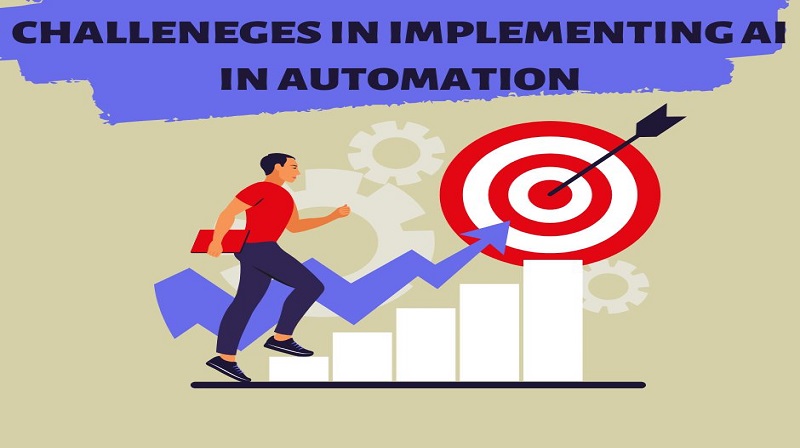
Steering Success Amidst AI Automation Challenges
- by PLC
- Aug 21, 2023
The integration of Artificial Intelligence (AI) into automation processes has revolutionized industries across the globe. AI's potential to enhance efficiency, accuracy, and productivity in various sectors is undeniable. However, the journey towards seamless AI integration in automation is not without its challenges. In this blog, we will explore the significant obstacles that organizations face when implementing AI in automation and delve into strategies to overcome them.
- Data Quality and Availability: One of the primary challenges in implementing AI in automation is the quality and availability of data. AI systems require vast amounts of high-quality data to learn and make accurate predictions or decisions. Inadequate or inaccurate data can lead to biased outcomes and unreliable automation processes. Organizations must invest in data collection, cleansing, and validation procedures to ensure that the AI algorithms receive accurate and representative information.
- Integration Complexities: Integrating AI into existing automation systems can be complex and time-consuming. Legacy systems might not be compatible with modern AI technologies, leading to integration challenges. The process often requires collaboration between IT teams, data scientists, and domain experts to ensure a smooth transition. Developing APIs and middleware to bridge the gap between old and new systems is essential for successful implementation.
- Skill Gap and Training: AI technologies demand a specialized skill set, including data science, machine learning, and AI programming. Many organizations face a shortage of professionals with these skills, making it challenging to develop, implement, and maintain AI-based automation solutions. To address this, investing in training programs for existing employees or collaborating with external AI experts can help bridge the skill gap.
- Ethical and Regulatory Concerns: AI-powered automation brings about ethical and regulatory challenges. Bias in AI algorithms, potential job displacement, and privacy concerns are real issues that need careful consideration. Organizations must prioritize transparency and fairness in AI decision-making processes and adhere to regulations governing data usage and automation practices.
- Change Management and Workforce Acceptance : Introducing AI-driven automation often triggers concerns among the workforce about job security and changes to daily tasks. Effective change management strategies are crucial to educate employees about the benefits of AI and automation, emphasizing how these technologies can enhance their roles rather than replace them. Involving employees in the implementation process and addressing their concerns can foster a more accepting environment.
- Continuous Learning and Adaptation: AI is not a one-time implementation; it requires continuous learning and adaptation. Automation processes that rely on AI need to evolve as the business landscape changes and new data becomes available. Regular updates and monitoring of AI algorithms are essential to ensure that the automation remains accurate and effective over time.
- Costs and ROI Calculation: Implementing AI in automation can involve substantial upfront costs, including technology investments, training, and infrastructure updates. Calculating the return on investment (ROI) for AI implementation can be challenging due to the complexities in measuring its impact on productivity, efficiency, and revenue. Organizations need to carefully assess both the short-term and long-term benefits to make informed decisions about AI integration.
The challenges in implementing AI in automation are substantial, but they are not insurmountable. Organizations that recognize these challenges and proactively address them can reap the rewards of enhanced efficiency, accuracy, and productivity. By focusing on data quality, integration, skills development, ethics, change management, adaptation, and cost analysis, businesses can navigate the complexities of AI implementation successfully and pave the way for a more automated and AI-augmented future.












